
Castellón is the northernmost province of the Valencian Community, which has three provinces in total. It covers over 6,000 square metres and 135 municipalities. Some localities clearly outstand among them due to their magnificent historical heritage or their breathtaking natural landscapes. Therefore, here is a compilation of the most beautiful villages in Castellón that you should visit at least once in your life.
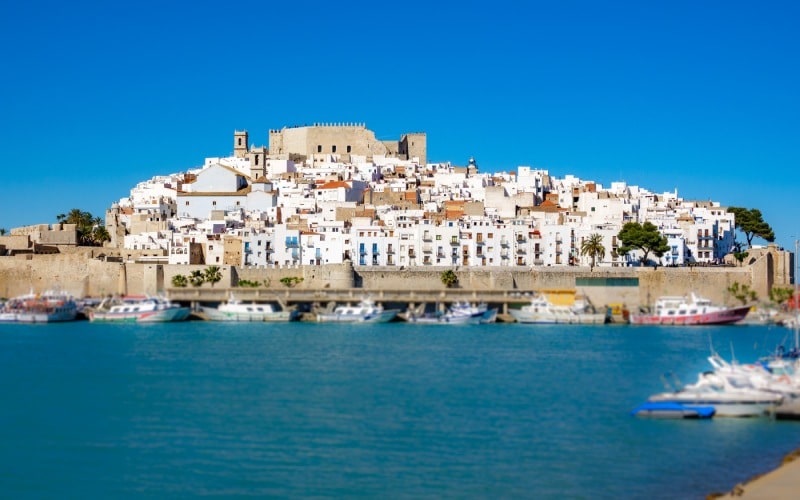
Peñíscola and its castle. | Shutterstock
The medieval origins of Peñíscola are still alive in its rich historical and cultural heritage. Its templar castle is the greatest example of it, which rises among the city and is perfectly preserved. But you shouldn’t miss its labyrinth of narrow streets or the walls that surround it. Besides, Peñíscola has gorgeous beaches and the nicest weather, which makes it the perfect destination for a family vacation.
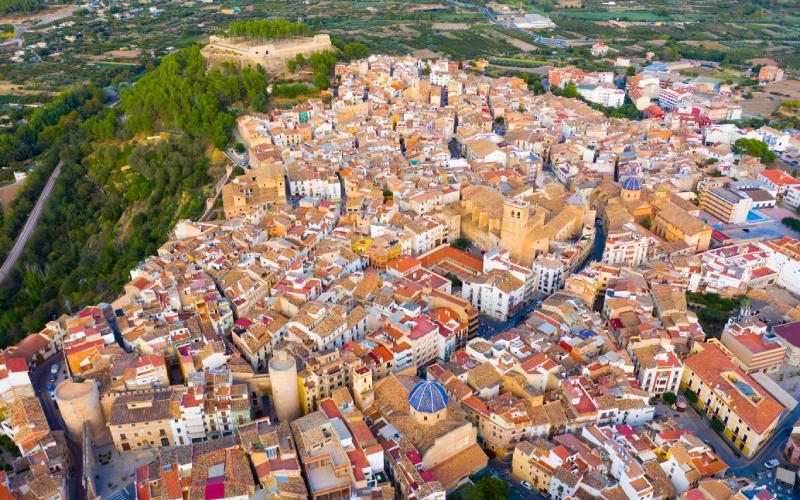
Aerial view of Segorbe. | Shutterstock
Segorbe is another place with a lot of history. Walking through its streets is the best way to really know it. This way, you can discover its heritage, like the Estrella castle or the medieval aqueduct, and its museums, such as the Museo Municipal de Arqueología y Etnología and the Catedralicio. Besides, this village lies between the natural parks of the Sierra de Espadán and the Calderona, so it is surrounded by natural landscapes that will charm every hiking lover with their magnificent routes.
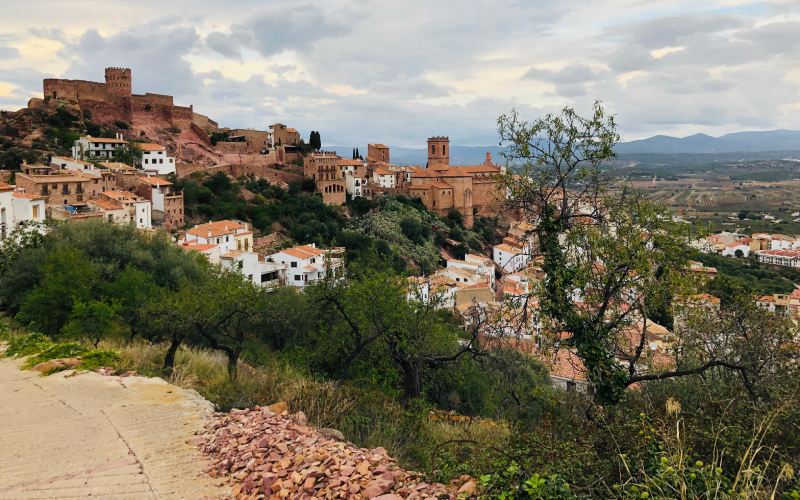
The lovely Vilafamés. | Shutterstock
You will see Vilafamés from afar, since it sits on top of a hill. Once you get there, you will fall in love with its old town centre, composed of narrow streets that tell tales about their Arabic origins and that lead to gorgeous stone constructions. Be sure to stop at the Iglesia de la Asunción and the Batlle Palace, and you will understand why this historical complex was declared a Bien de Interés Cultural in 2005.

Pebbled street in Culla. | Shutterstock
In the Alto Maestrazgo region, a tiny municipality of just a few hundred residents awaits. Its name is Culla, and it holds traces of every civilisation and culture that has stayed there, especially the Arabs and Templars. Its past is still in the air and, especially, in its monuments: the Arabic castle, the Antiguo Granero del Comendador, and the Salvador church, among others. Besides, there are many options to go on tours of the beautiful landscapes that surround this locality.
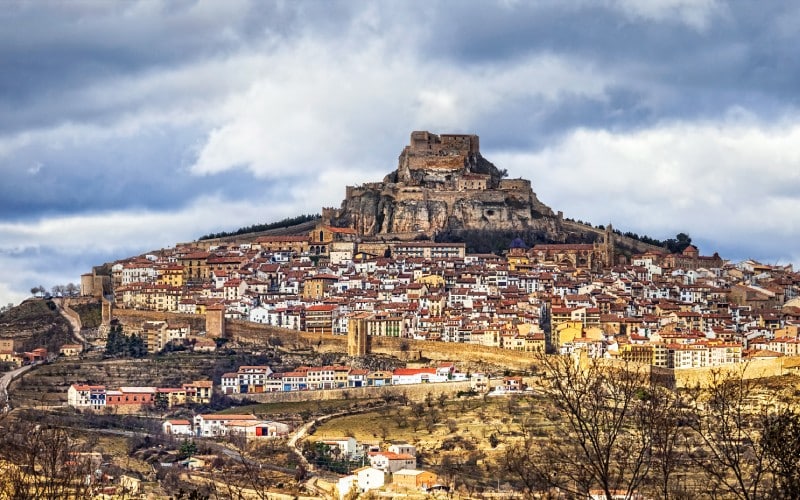
Morella is one of the most beautiful villages in Spain. | Shutterstock
History and nature embrace each other in Morella. The most outstanding monument in Morella is the castle that watches over the town. This fortress was built in a strategic location to control access to shore and land. By visiting it, you won’t only be discovering its history, but you will also enjoy a gorgeous panoramic view of its reddish roofs and the mountain ranges that surround it. You should add the Basílica Arciprestal Santa María la Mayor and the Torres de San Miguel to your bucket list.
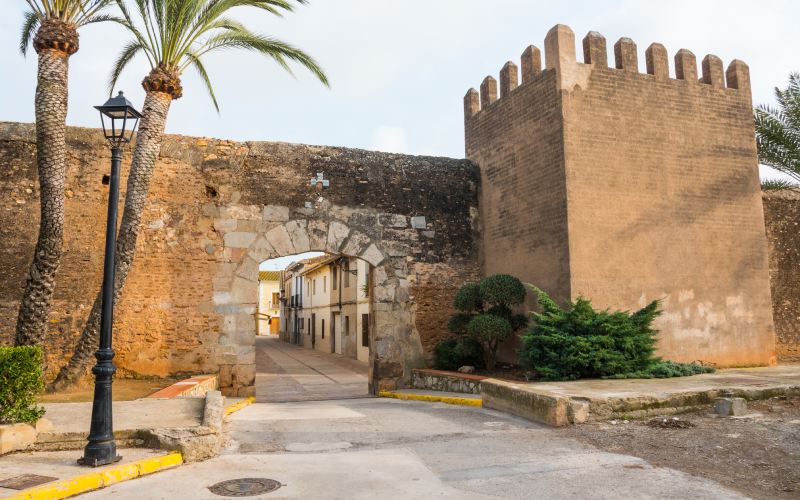
The walled Mascarell. | Shutterstock
The origins of Mascarell are linked to the expulsion of the Muslims that lived in the nearby location of Burriana, which took place in the 14th century. Its walls are made of mortar, sand, and bricks. Each side of this almost quadrangular design is divided by a central tower. There are two entrances, one in the east and another in the west. Inside its walls, a city hall from the late 18th century and a church from the late 17th century stand tall.
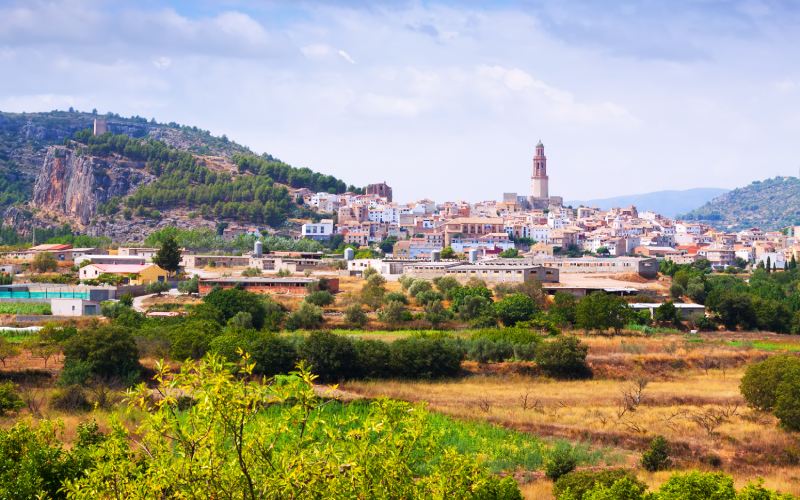
Panoramic view of Jérica. | Shutterstock
Jérica has a great tourist offer. The walls that delimit its town centre are its main tourist attraction, but the San Roque hermitage, built on a previous Arabic construction, and the Mudejar tower, which you can access through a spiral staircase, are a must as well. Besides having a rich heritage, it also offers plenty of lovely natural landscapes, like the Regajo swamp and the Hoz and Fuentes routes.

Santuario de Nuestra Señora de los Ángeles. | Shutterstock
In the north of Castellón, you will find Sant Mateu, Maestrazgo‘s historical capital. This town enjoyed a period of maximum splendour during the 14th and 15th centuries, which can be perceived even now in its historical and artistic heritage. Its octagonal bell tower is an extremely eye-catching sight, but so are its main square and its medieval dungeons. You can discover its architecture and its charming natural landscapes on different routes.

Hermitage near Fanzara. | Shutterstock
Fanzara is one of the most beautiful villages in Castellón. Art lovers might want to enjoy the art on the walls of the Museo Inacabado de Arte Urbano. If you prefer adventure tourism, there are many hiking trails available to dive into the astonishing landscapes that surround the town. One of them will take you to the ruins of Fanzara’s castle, where you can learn about its captivating history.
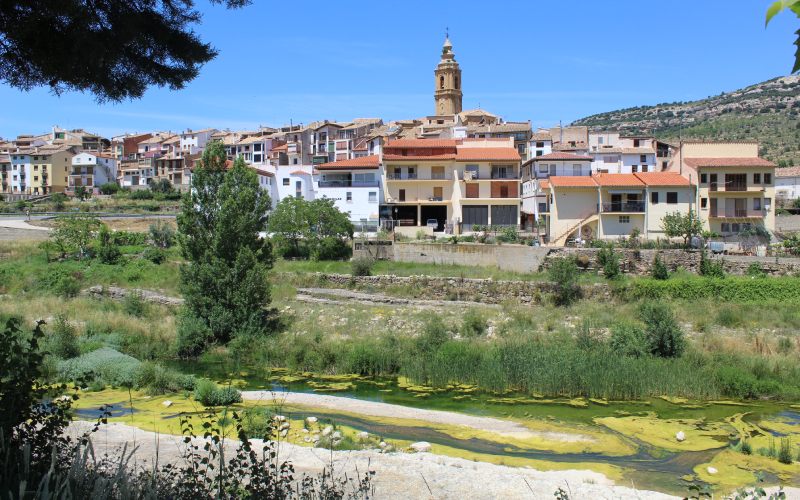
View of Forcall. | Shutterstock
A mere visit isn’t enough to enjoy Forcall; it should be observed from its viewpoints. The closest are in the Mare de Déu de la Consolación hermitage, and you will find another one in Mola La Vila or San Marcos. One of its most peculiar tourist attractions is the Museo de la Alpargata, where you can learn how artisans make espadrilles, or alpargatas, the typical footwear of the area.

Chodos sits in a spectacular environment. | Shutterstock
Chodos is our last stop, a tiny village whose narrow and steep streets bring us back to its medieval origins. It sits in the heart of Penyagolosa Natural Park, surrounded by hills and cliffs where many animal and plant species live. Undoubtedly, this is the perfect destination for nature lovers. It also has a rich cultural heritage: the Chodos castle, its town centre, the San Cristóbal hermitage…